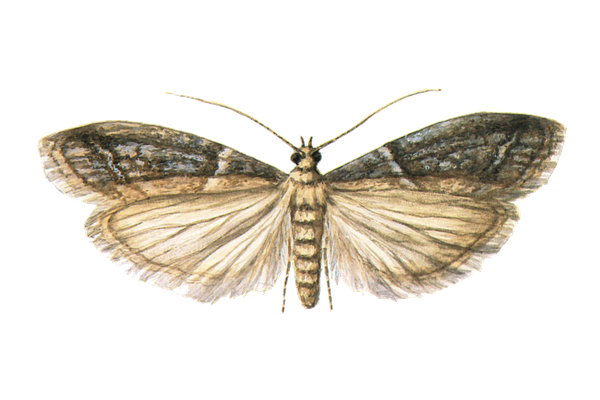| Description | The tropical warehouse moth has brown-grey forewings with a darker band running across the middle and far edges. The wingspan is approximately 15–20 mm and when at rest its length is between 10–12 mm. The yellow-white larvae grow up to 14 mm long, have a brown head and a dark spot at the base of the back hairs. |
|---|---|
| Distribution | Cosmopolitan with a range extending from the tropics to temperate regions. Prefers warm, humid environment. |
| Pest status | Major, widespread, regular. |
| Host range | Does not affect field grown crops, only stored cereal grain, flour, oilseeds, as well as dried fruits, nuts and beans. |
| Damage | Commonly attacks stored grains, with larvae feeding on damaged / processed grain and flour. Heavy infestation of larvae results in very large quantities of webbing over the surface of the grain and adjacent parts of the storage structure. |
| Life cycle | Adult moths do not feed and are short-lived (10 days). Females lay between 100-200 eggs among or in the infested goods. The eggs hatch in around 3–8 days and larvae begin to feed immediately. The larva pupates in a cocoon either within or around the infested material. Life cycle from egg to adult normally takes 30–50 days under optimal conditions. |
| Means of protection |
Cultural control – The insect does not occur in standing crops. Therefore, good hygiene with storage and handling equipment should minimise infection. Prevention treatment by Methograin Delta IGR Grain Protectant is the primarily recommended product for prevention. To gain the widest possible range of protection Methograin Delta IGR Grain Protectant together with Methograin Fenitrothion 1000 can be applied. Chemical control – In case of infestation, fumigation in sealed storage. |
